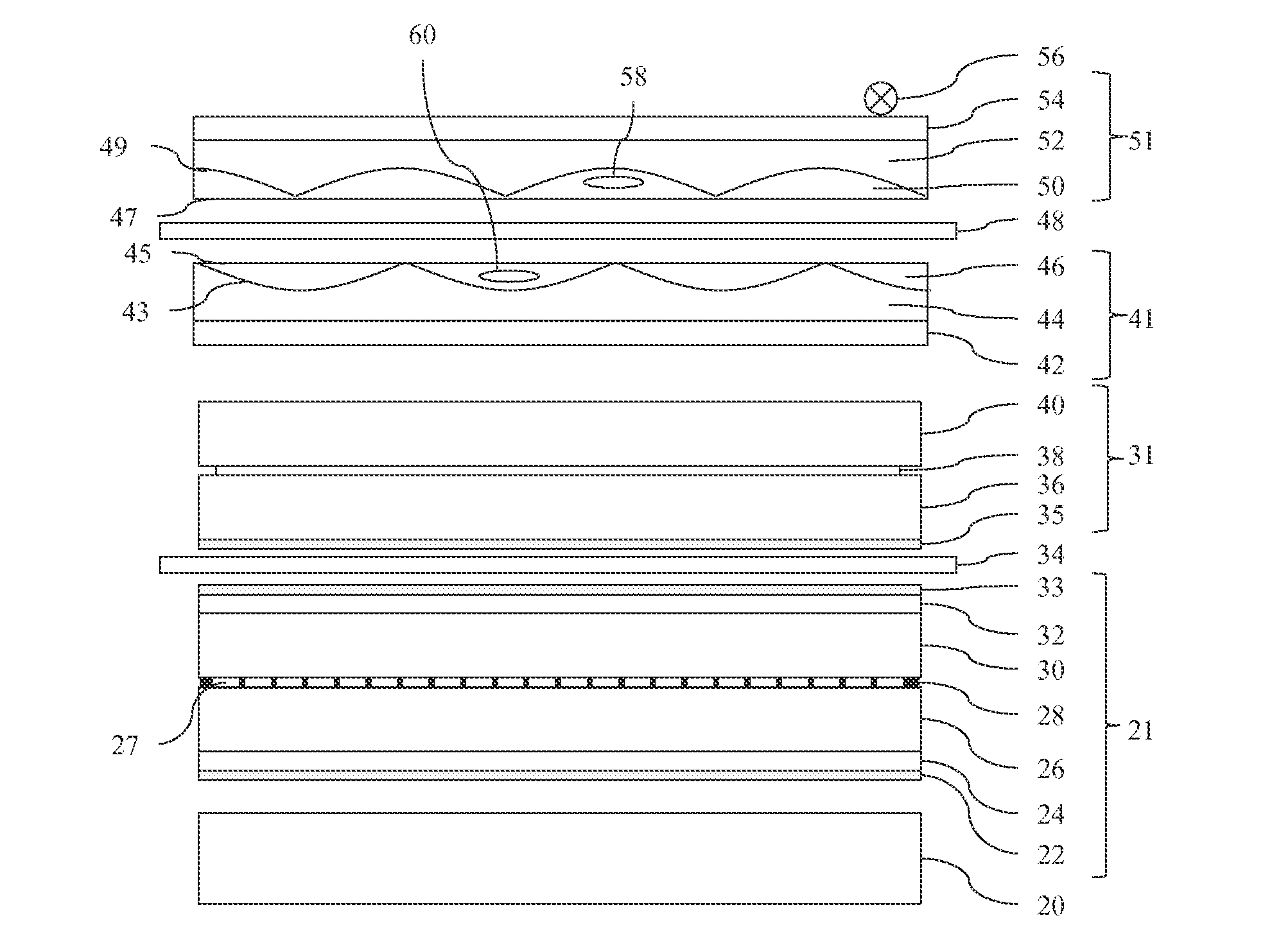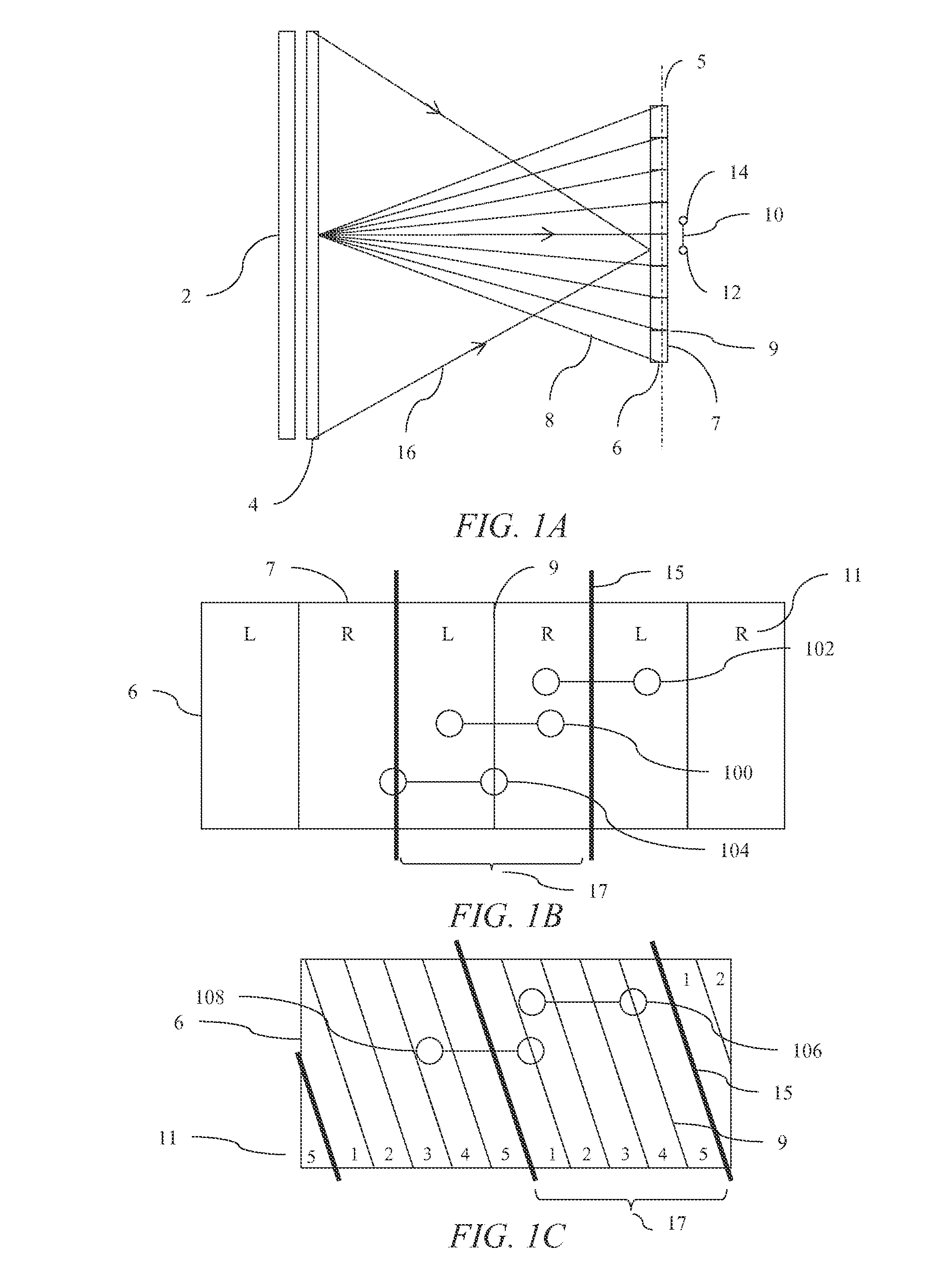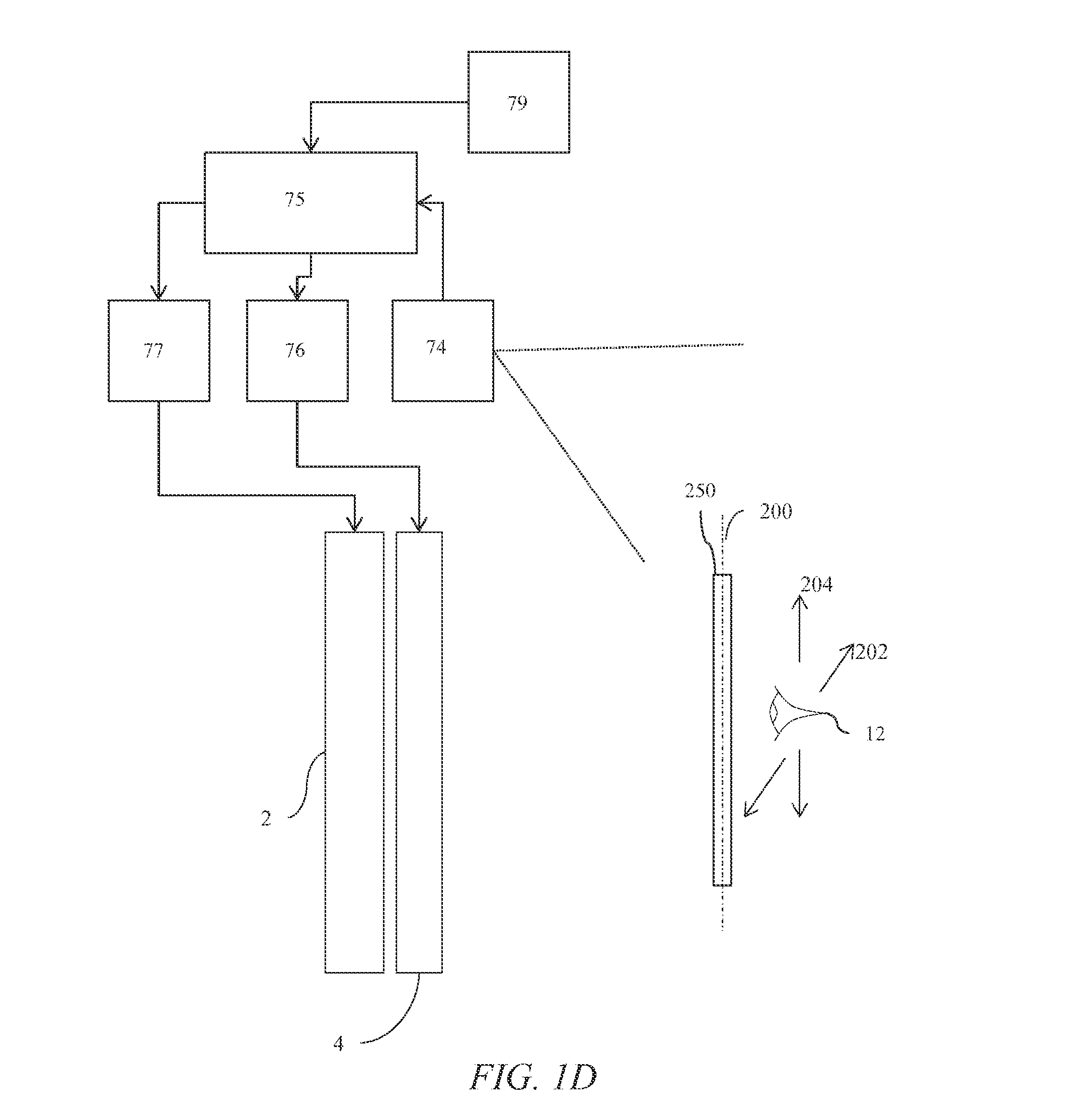Observer tracking autostereoscopic display
a display device and observer technology, applied in the field of observer tracking autostereoscopic display devices, can solve the problems of limiting the viewing freedom of the display, reducing the spatial resolution of the display, and non-uniform viewing windows, so as to improve the spatial resolution, and improve the spatial resolution
- Summary
- Abstract
- Description
- Claims
- Application Information
AI Technical Summary
Benefits of technology
Problems solved by technology
Method used
Image
Examples
Embodiment Construction
[0078]Time multiplexed autostereoscopic displays can advantageously improve the spatial resolution of an autostereoscopic display by directing light from all of the pixels of a spatial light modulator to a first viewing window in a first time slot, and all of the pixels to a second viewing window in a second time slot. Thus, an observer with eyes arranged to receive light in first and second viewing windows will see a full resolution image across the whole of the display over multiple time slots.
[0079]FIG. 1A is a schematic diagram illustrating a top view of light ray 8, 16 propagation from an autostereoscopic display comprising a spatial light modulator (SLM) 2 comprising an array of pixels arranged in an aperture that has a rectangular shape (as described further below). The SLM 2 is provided with a spatially multiplexing parallax optic 4, such as a parallax barrier or lenticular screen, and arranged to direct rays 8 of light from spatially multiplexed sub-arrays of pixels to an a...
PUM
 Login to View More
Login to View More Abstract
Description
Claims
Application Information
 Login to View More
Login to View More - R&D
- Intellectual Property
- Life Sciences
- Materials
- Tech Scout
- Unparalleled Data Quality
- Higher Quality Content
- 60% Fewer Hallucinations
Browse by: Latest US Patents, China's latest patents, Technical Efficacy Thesaurus, Application Domain, Technology Topic, Popular Technical Reports.
© 2025 PatSnap. All rights reserved.Legal|Privacy policy|Modern Slavery Act Transparency Statement|Sitemap|About US| Contact US: help@patsnap.com



